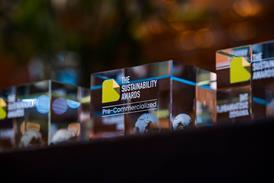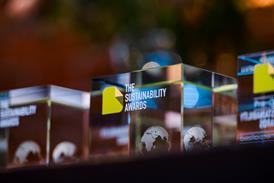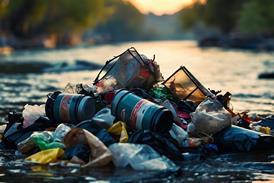
The packaging industry is moving swiftly towards sustainability in response to consumer demand for eco-friendly solutions and increasingly stringent regulations, with mandates like the Packaging and Packaging Waste Regulation (PPWR) significantly influencing packaging design and composition. Brand owners are setting recycling targets and reducing plastic usage, prompting a shift towards alternatives like fibre-based packaging.
In this edition of our ‘In Conversation With…’ series, Markus Locher, global manager of Barrier & Sustainable Packaging Solutions for Paper & Board at ACTEGA, discusses the company’s role in supporting the industry’s transition into sustainability-minded packaging. He explores the challenges of creating a circular economy for fibre-based packaging and explains how ACTEGA’s initiatives and solutions address these challenges.
How does ACTEGA envision a circular economy for fibre-based packaging and how far has the company progressed toward this goal?
At ACTEGA, we are strong advocates of sustainability, and our strategy is focused on transitioning from a linear production system towards a circular economy approach. This transformation is underpinned by four key tactics aimed at improving the sustainability of packaging applications, including fibre-based packaging.
- Recycle – Ensuring our products contribute seamlessly to the recycling process, enabling end-products to be efficiently recovered.
- Reduce – Investing in innovative technologies to reduce material usage, waste volumes, and energy consumption, behind highly efficient processes.
- Displace – Creating solutions that replace hard-to-recycle materials and improve overall recyclability.
- Replace – Leveraging our expertise to substitute hazardous materials with safer, sustainable alternatives across formulations.
Our water-based ACTGreen® Barrier Coatings represent a prime example of these efforts. These coatings enable the production of recyclable, fibre-based packaging that replaces hard-to-recycle materials without compromising quality or functionality. These coatings ensure up to 95% recyclability of packaging materials, aligning with circular economy principles and minimizing waste.
Achieving true sustainability requires systemic collaboration across the value chain. ACTEGA plays an active role in initiatives like the 4evergreen alliance, which strives to optimize the recyclability and climate performance of fibre-based packaging.
Do any of ACTEGA’s fibre-based packaging solutions hold certifications or ecolabels?
Yes, ACTEGA’s solutions align with several certifications that reflect our commitment to quality, sustainability, and compliance. Our solutions are adapted to meet local circular economy conditions, with a current focus on recycling. The numerous certifications, acquired by various ACTEGA sites over the years, demonstrate our commitment across multiple areas, such as product and process quality, as well as services, solutions, and supply.
For instance, we received EcoVadis certification, which evaluates our environmental practices, procurement policies, and the social and ethical aspects of our business. Additionally, we uphold Material Health Certifications and adhere to Cradle to Cradle® design principles, ensuring that materials are recyclable and environmentally safe.
At the company level, ACTEGA upholds ISO 9001-certified facilities worldwide, alongside certifications in energy, environmental, and safety management. We also conduct targeted audits based on customer needs to evaluate individual suppliers. These efforts solidify our dedication to sustainable, high-quality processes and customer-focused solutions.
ACTEGA is part of the 4evergreen alliance, aiming for a 90% recycling rate for fibre-based packaging by 2030. How close do you believe we are to achieving this goal?
Achieving a 90% recycling rate for fibre-based packaging by 2030 is ambitious, yet attainable with focused efforts and collaboration. With our sustainable solutions, particularly our Barrier Coating Solutions, ACTEGA is poised to help its customers and partners in achieving their recycling targets.
Our water-based coatings are designed to ensure paper packaging maintains its recyclability while offering outstanding barrier properties against water, oils, and vapour. We understand, however, that the barrier effect depends on many variables, such as substrate type and production processes. To support this, we offer a dedicated Barrier Solutions team and advanced testing methods tailored to individual customer needs.
Additionally, our investment in recycling test facilities, equipped to meet the latest standards, enables us to evaluate factors such as fibre recovery and impurities. We also actively contribute to shaping circularity by design guidelines within the 4evergreen alliance, providing clear recycling approaches that brands can confidently integrate into their packaging strategies.
What challenges do you see for the circular economy in fibre-based packaging, and how does ACTEGA address them?
One significant challenge is the lack of harmonized global regulations on recycling and circularity. The approach varies regionally, making it complicated for manufacturers to design universally sustainable solutions.
Different directives, such as the EU’s Single-Use Plastics Directive (SUPD), which is a commission guideline on single-use plastic products, aims to prevent and reduce the impact of certain plastic products on the environment in Europe. SUPD, for instance, prohibits polystyrene packaging and restricts plastic linings in paper-based packaging to mitigate environmental impact.
Meanwhile, the EU’s draft Packaging and Packaging Waste Regulation (PPWR), introduced in 2022 with possible implementation in 2025, will affect various packaging types and materials, pushing for a circular economy. As a result, the packaging industry must navigate a complex regulatory landscape with diverse requirements, including recyclability, labelling, and raw material sourcing.
At ACTEGA, we address this challenge by monitoring global regulations and adapting our product portfolio to meet these requirements. Furthermore, we spend a lot of effort supporting our customers to comply with all the different regulations. We have also established a state-of-the-art recycling laboratory, which allows us to simulate and test recycling processes using existing and forthcoming standards.
How do you see the packaging industry evolving, and what role will ACTEGA play in driving this transformation?
The packaging industry will continue to shift towards greater sustainability, evaluating solutions not only for recyclability but also for genuine environmental impact. Brands will come under increasing pressure to verify their sustainability claims, and packaging cannot simply appear eco-friendly—it must perform sustainably throughout the life cycle.
ACTEGA is well-positioned to support this transition. By continuously developing new solutions, we enable the shift to a real circular economy in packaging. With our collaborations across the value chain, we aim to drive industry-wide change.
The future of packaging is undoubtedly tied to sustainability, and ACTEGA is fully committed to leading this revolution. Next, ACTEGA plans to explore fully bio-based solutions that are both commercially viable and environmentally friendly, ensuring they do not harm natural habitats.
To learn more about ACTEGA’s pursuit of sustainability, click here.


















No comments yet